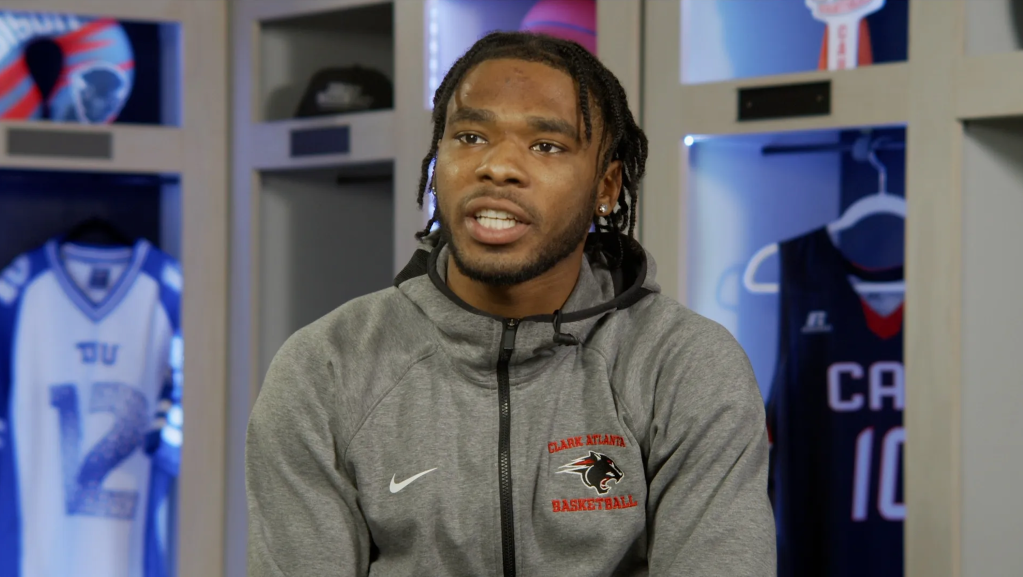Public discourse about Black identity often centers the African-American experience, while dominant conversations about Latinx identity typically erase Blackness all together. However, according to a Pew Research study done in 2016, a quarter of Latinx people in the U.S. self-identify as Afro-Latinx.
Artist M. Tony Peralta has never been one to shy away from these types of complex conversations. Raised in New York City’s Washington Heights, a predominantly Dominican neighborhood located just above Harlem, he describes himself as the “rebellious” love child of both Dominican and hip-hop cultures.
The proudly Afro-Latinx and first-generation son of immigrant parents, the 42-year-old considers the identity of his family “very mixed and complex,” describing their genetic makeup as ranging from indigenous, to Black and white.
Peralta cites Ice Cube and Spike Lee as some of his earliest (and most unapologetic) inspirations.
“The people I looked up to were completely outspoken,” he said. “It goes hand in hand with being a New Yorker and with being Dominican. Dominicans love talking shit, Dominicans love talking about politics. It’s really just continuing with the tradition.”
The artist masterfully melds his experiences into The Peralta Project, his lifestyle brand that produces prints and street wear, attracting the attention of high-profile clients such as Alicia Keys and Desus and Mero. While he began his career as an accessories/handbag designer, he started his personal brand in 2005 with a piece called “The Gaza Strip,” a print that served as a commentary on the political conflict in Palestine.
“A lot of the work I was doing when I first started to do art was very politically motivated,” he said. “They’re all very powerful pieces but they were all very heavy…it took a toll on me. I needed to start making artwork that wouldn’t be so intense and that’s what I did.”
From there, Peralta began to make the designs his brand is now best known for, such as his pop-art interpretations of everyday Latinx culture objects, with tees and prints featuring Goya products and Cafe Busteló cans, and cultural icons reimagined with rollers among them.
“The brand went from just street wear to aiding Latinos in their identity,” he said. “We live in a time now that America loves showing us that we’re not American. It forces us to be a lot more united and identify with our culture…we don’t have to assimilate anymore.”
‘We live in a time now that America loves showing us that we’re not American. It forces us to be a lot more united and identify with our culture … we don’t have to assimilate anymore.’
With his work, Peralta challenges the white-washed images of Latinx people and culture that are most common in media.
“I still have a problem with the constant representation of Latinos being light-skinned,” he said. “There needs to be a visual representation [of Blackness] to go along with our stories. Even when Afro-Latinos are brought into the conversation, the people who bring those stories in are light-skinned with curly hair.”
‘I still have a problem with the constant representation of Latinos being light-skinned … There needs to be a visual representation [of Blackness] to go along with our stories.’
Peralta takes complicated words like negra or morena and uses them to celebrate the beautiful Blackness that can be found in Latinx communities. Many of his pieces celebrate Afro-Latinidad, the cultural collective of Latinxs that identify as Black.
Though he is passionate about ending the erasure of Afro-Latinxs, in the U.S. and abroad, Peralta cautions against demanding inclusion in ways that don’t actually line up with history.
“I remember when the [Smithsonian Museum of African American History and Culture] opened and there was an uproar within the community about the lack of representation of Afro-Latinos,” he said. “We really don’t belong there, unless it’s someone like Arturo Schomburg. There might be a handful of Afro-Latinos who might have been around in the ’50s and ’60s, but I don’t think it’s fair to African Americans that we share that.”
Many Afro-Latinx individuals and families, including Dominicans, Cubans, and Puerto Ricans, are the descendants of people who didn’t establish themselves in the United States until the ’60s and ’70s. Their history in the country is mere decades old, compared with African Americans have been a mainstay for the entire existence of the U.S.. Peralta wants to celebrate and affirm the myriad contributions of the Afro-Latinx community, but is careful to do it the right way.
“Everyone’s culture is just so much more than just one big stroke,” he said. “We deserve that.”
















